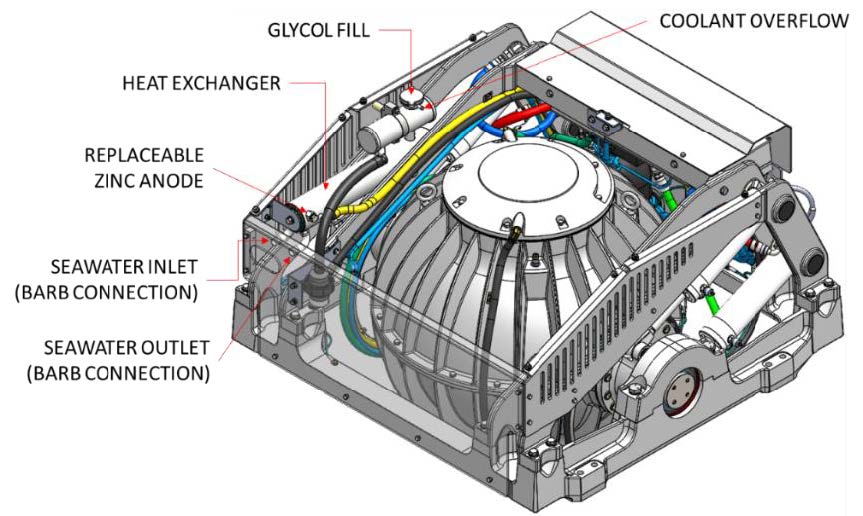Seakeeper 16/18/12HD Installation Manual (90549-2)
Connecting Seawater to Heat Exchanger
- Connect seawater from installer supplied pump to ¾ in. (19 mm) hose barb on heat exchanger. Use the same practices as typical below waterline seawater plumbing. Required flow rate is 4 GPM (15.1 LPM) minimum and 8 GPM (30.3 LPM) maximum.
- Connect seawater return to overboard drain. Use the same practices as typical below waterline seawater plumbing.
- In addition to initial operation at dock, new Seakeeper installations should be checked with a flow meter for minimum 4 GPM (15.1 LPM) flow while vessel is at speed and when backing down. If no other method of confirming flow is available, discharge line may be temporarily diverted to a bucket. Flow is calculated from time to fill a known volume. A self-priming sea water pump (customer/installer supplied) may be required due to installation location to maintain water flow in all underway conditions where cavitation near the intake may occur and potentially cause an air-lock condition restricting seawater flow to the heat exchanger.
- To prevent cavitation / aeration of the seawater intake a forward-facing scoop should be utilized. In addition, the seawater intake should be located in a location that will not aerate during normal underway operation.
- Inspect raw water plumbing after sea trial for any signs of leakage.
- Heat exchanger contains removable endcaps to provide access for cleaning the tube bundle.
